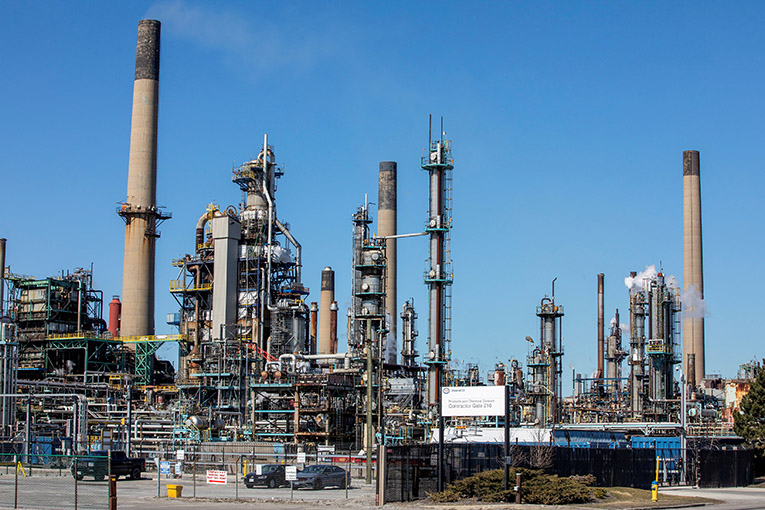Imperial Oil, one of Canada’s biggest refiners, outlined a plant to capture carbon dioxide emissions, and to produce renewable fuels using greener sources of energy, such as blue hydrogen.
Firstly, ExxonMobil is the majoritarian owner of Imperial Oil; consequently, the plan is also part of ExxonMobil’s goal to producing more than 40,000 barrels per day of low-emissions fuels by 2025.
Secondly, Imperial Oil’s plan is to process vegetable oil into renewable diesel at its 191,000-barrel-per-day Strathcona refinery. The plan is pending regulatory approvals.
Thirdly, the aim of the company is to construct a hydrotreater and use fossil-fuel derived blue hydrogen to process feedstocks; such as canola and soybean oils into 20,000 barrels per day (bpd) of renewable diesel, by 2024.
Moreover, as Reuters reports, the final decision to go ahead with the plan needs government support, as well as favorable market conditions; consequently, Imperial Oil did not disclose the amount of investment it is willing to spur for the project.
Also recommended for you: Clean power installations in the U.S. rose 17% on 1H 2021: ACP. Click here to read.
Imperial Oil to capture 500,000 metric tons of CO2 per year
In addition, the market conditions and government support would come in the form of the Canadian Clean Fuel Standard, which will take effect next year. The standard intends to spur investment in clean-energy technology, so that refiners in Canada can process biofuels.
However, the standard would also allow smaller refiners that do not meet emissions reduction targets to buy credits generated from cleaner fuel producers; which would create a market trading scheme that would boost demand. In this regard, Andy Madden, vice president of strategy and planning for Exxon, said. “It would enable faster and deeper decarbonization with a market driver; so, technologies can be developed more effectively.”
On the other hand, the plan of Imperial Oil is also to capture and store underground about 500,000 metric tons of carbon dioxide each year. So, it would create a circular decarbonization producing scheme.
Finally, Canada’s Clean Fuel Standard aims to cut greenhouse gas emissions by 30% below 2005 levels by 2030.


